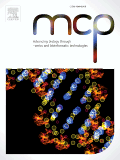
“Rationale: The behavioral effects of cannabidiol (CBD) are understudied, but are important, given its therapeutic potential and widespread use as a natural supplement.
Objective: The objective of this study was to test whether a single injection of CBD affected anxiety-like or attention-like behavior, or memory in wildtype mice or mice with reported trait anxiety due to a targeted-gene deletion in a voltage-dependent potassium channel, Kv1.3.
Methods: Wildtype C57BL/6 J and Kv1.3-/- mice of both sexes were reared to adulthood and then administered an intraperitoneal injection of 10 or 20 mg/kg CBD. Mice were behaviorally-phenotyped using the marble-burying test, the light-dark box (LDB), short (1 h) and long-term (24 h) object memory test, the elevated-plus maze (EPM), and the object-based attention task in order to assess obsessive compulsive-, anxiety-, attention-like behaviors, and memory.
Results: We discovered that acute CBD treatment reduced marble burying in male, but not female mice. CBD was effective in lessening anxiety-like behaviors determined by the LDB test in both male and female wildtype mice, whereby the effective dose required to observe the effect in females was less. In Kv1.3-/- mice, CBD increased anxiety-like behaviors in the LDB in both sexes at the higher concentration of CBD and it similarly increased anxiety-like behavior in females in the EPM at the lower concentration of CBD. Long-term object memory was reduced in male wildtype mice at the lower concentration of CBD. Finally, ADHD- or attention-like behaviors were not altered by CBD in wildtype mice, but in Kv1.3-/- mice, females were observed to have a loss in attention while males demonstrated improved attention.
Conclusions: We conclude that administration of a single dose of CBD has immediate effects on mouse behavior that is dose, sex, and anxiety-state dependent – and that these behavioral outcomes are important to examine in parallel human trials.”
https://pubmed.ncbi.nlm.nih.gov/36455670/
https://www.sciencedirect.com/science/article/pii/S0091305722001770?via%3Dihub


 “Background: Little is known about the the acute effects of cannabis on symptoms of OCD in humans. Therefore, this study sought to: 1) examine whether symptoms of OCD are significantly reduced after inhaling cannabis, 2) examine predictors (gender, dose, cannabis constituents, time) of these symptom changes and 3) explore potential long-term consequences of repeatedly using cannabis to self-medicate for OCD symptoms, including changes in dose and baseline symptom severity over time.
“Background: Little is known about the the acute effects of cannabis on symptoms of OCD in humans. Therefore, this study sought to: 1) examine whether symptoms of OCD are significantly reduced after inhaling cannabis, 2) examine predictors (gender, dose, cannabis constituents, time) of these symptom changes and 3) explore potential long-term consequences of repeatedly using cannabis to self-medicate for OCD symptoms, including changes in dose and baseline symptom severity over time. “Although several lines of evidence support the hypothesis of a dysregulation of serotoninergic neurotransmission in the pathophysiology of obsessive-compulsive disorder (OCD), there is also evidence for an involvement of other pathways such as the GABAergic, glutamatergic, and dopaminergic systems.
“Although several lines of evidence support the hypothesis of a dysregulation of serotoninergic neurotransmission in the pathophysiology of obsessive-compulsive disorder (OCD), there is also evidence for an involvement of other pathways such as the GABAergic, glutamatergic, and dopaminergic systems.



